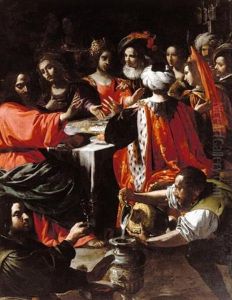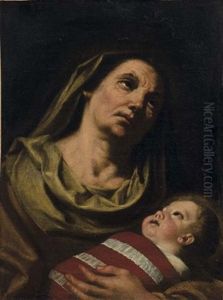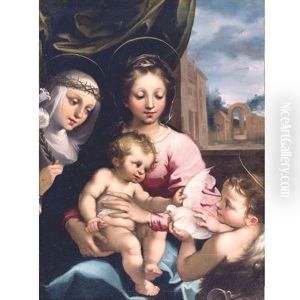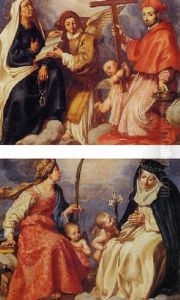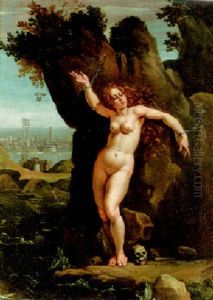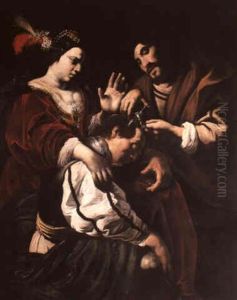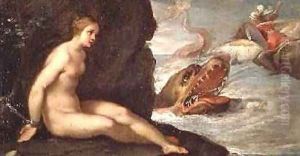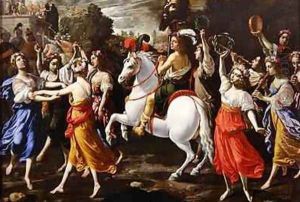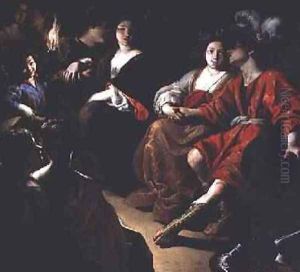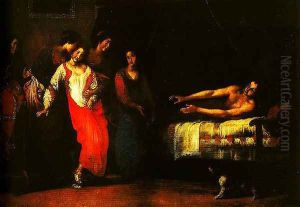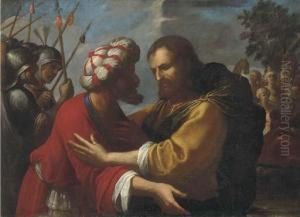Rutilio Manetti Paintings
Rutilio Manetti was an Italian painter of the Baroque period, primarily active in Siena. Born in Siena in 1571, Manetti was considerably influenced by the works of Caravaggio and his followers, which is evident in his use of dramatic lighting and intense emotional expressions in his paintings.
He was initially trained by Francesco Vanni, one of the leading painters in Siena at the time. Vanni's guidance provided Manetti with a solid foundation in the Mannerist style, which was prevalent during the late 16th century. However, as his style developed, Manetti began to move away from Mannerism's artificial elegance in favor of the more naturalistic approach of Baroque art.
Throughout his career, Manetti produced numerous works for churches and private patrons, including altarpieces, religious narratives, and portraits. He was adept at both large-scale religious compositions and more intimate depictions of everyday life. His paintings often featured warm, rich colors and a masterful control of light and shadow, which added a sense of drama and realism to his subjects.
Some of Manetti's notable works include 'The Ecstasy of St. Catherine', 'The Stigmatisation of St. Catherine of Siena', and 'The Healing of Tobit'. These works are celebrated for their vivid detail and emotional depth, showcasing Manetti's skill in bringing biblical stories to life.
Despite his talent and the high quality of his work, Rutilio Manetti is not as well-known as some of his contemporaries. Nevertheless, his contributions to the Baroque movement in Siena have been recognized by art historians, and his paintings can still be admired in various museums and churches, primarily in Italy.
Rutilio Manetti's life was dedicated to his art, and he remained active until his death in 1639. His legacy is that of a skilled Baroque painter who captured the transition from Mannerism to Baroque, reflecting the changing tastes and artistic innovations of his time.


